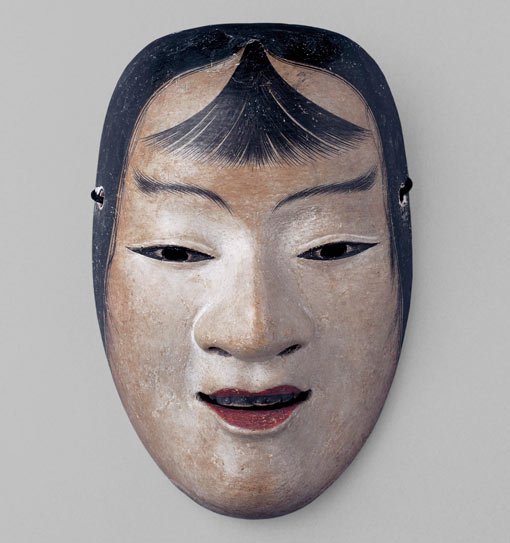Nō masks

Nō mask Kasshiki (kokasshiki), Muromachi period, 16th century, Agency for Cultural Affairs of Japan
One of the most distinctive features of nō is the use of masks. Referred to as omote, or ‘face’, nō masks go far beyond the limits of make-up and are thought to be imbued with spiritual power.
Nō masks are divided into five broad categories. The first type, the old man mask, has hair and a beard, and personifies a variety of facial expressions. The second type, the demon mask, is divided into those with open or closed mouths and with gold-painted eyes. Some demon masks show animal spirits such as foxes, others show goblins or supernatural lions.
Masks depicting young men form the third type, while women of various ages belong to the fourth type. The fifth type represents the ghosts of deceased people who return to the living world to seek revenge or absolution.
Okina masks belong to a special category. Dating from the early 14th century, they are the oldest mask type and are used exclusively in the ceremonial performance called ‘Three rituals’ (Shiki sanban).
Questions and activities
- Compare and contrast the two masks reproduced here. Write a character profile for each one. Invent a story about the two characters might interact in a play.
- Design and make two masks that show the age and character of someone as they grow older. Consider what hairstyles and facial expressions they should have to enhance their characteristics so the audience can tell it is the same person at different stages of life.